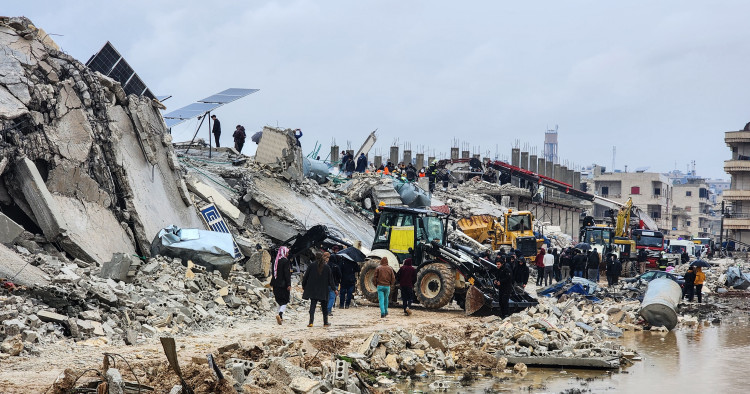When civilians in northern Syria went to bed on Feb. 5, they did so while military conflict was in a state of relative calm. Little did they know that the most powerful earthquake to hit the region in almost 100 years would strike while they slept. After 12 years of brutal conflict in which the Syrian regime has used almost every weapon available against its own population, the level of destruction meted out by the earthquake upon Syria’s northwest has no close comparison. Areas now controlled by the regime have been hit hard by the earthquake and subsequent aftershocks as well. Just a day later, the death toll in Syria stands at over 2,000 and continues to rise. Hundreds, if not thousands, of people remain under rubble.
When it comes specifically to opposition-controlled northwestern Syria, a natural disaster like this could not have hit a more vulnerable population. Before the earthquake, the region represented one of the world’s most acute humanitarian crises. More than 4.5 million civilians live there, in a pocket of territory that represents no more than 4 percent of Syria—and nearly 3 million of them are displaced. At least 65 percent of basic infrastructure lay destroyed or heavily damaged, and 90 percent of the population is dependent on humanitarian aid, which comes through just one border crossing via Turkey, in Bab al-Hawa.
That cross-border aid effort is a mammoth operation, coordinated by the United Nations. There used to be three crossings utilized for cross-border aid in northern Syria, but Russia has forced two of them shut by using its veto power at the U.N. Security Council. In recent years, Russia has threatened to close Bab al-Hawa altogether, triggering warnings from U.N. aid bodies and nongovernmental organizations (NGOs) that such a move would spark a humanitarian catastrophe. Since the earthquake, the crossing has been forced shut. The only main road connecting it to Turkey’s interior was heavily damaged and U.N. aid infrastructure was crippled. Aid workers have been suffering the same fate as millions of others living in the disaster-hit region.
Continue reading on Foreign Policy
Photo by Zana Halil/ dia images via Getty Images
The Middle East Institute (MEI) is an independent, non-partisan, non-for-profit, educational organization. It does not engage in advocacy and its scholars’ opinions are their own. MEI welcomes financial donations, but retains sole editorial control over its work and its publications reflect only the authors’ views. For a listing of MEI donors, please click here.













